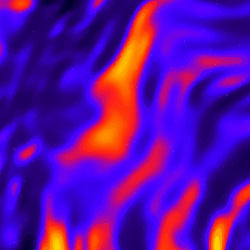Mid and Long Wavelength Infrared Photonics, Materials, and Devices
 Mid and long wavelength infrared (MWIR/LWIR, ranging from 2 to 20 μm) materials and devices are in high demand across various fields, including biochemical sensing, thermal sensing and imaging, free space communication, spectroscopy, astronomy, defense and security, anticounterfeiting measures, medical diagnostics, and environmental pollution monitoring. However, despite their strategic significance, numerous challenges have impeded their advancement and widespread use. Overcoming these obstacles requires a substantial reduction in production costs, enhanced integration with control electronics, and a broader range of emitters, detectors, and optoelectronic devices. To address these challenges, the development of novel materials, innovative device designs, and more precise metrology tools is imperative. This Special Topic Collection serves as a platform for discussing the latest advancements in MWIR/LWIR physics and technologies. The broad MWIR/LWIR communities are invited to publish the latest developments in all key areas related to MWIR/LWIR physics and engineering.
Mid and long wavelength infrared (MWIR/LWIR, ranging from 2 to 20 μm) materials and devices are in high demand across various fields, including biochemical sensing, thermal sensing and imaging, free space communication, spectroscopy, astronomy, defense and security, anticounterfeiting measures, medical diagnostics, and environmental pollution monitoring. However, despite their strategic significance, numerous challenges have impeded their advancement and widespread use. Overcoming these obstacles requires a substantial reduction in production costs, enhanced integration with control electronics, and a broader range of emitters, detectors, and optoelectronic devices. To address these challenges, the development of novel materials, innovative device designs, and more precise metrology tools is imperative. This Special Topic Collection serves as a platform for discussing the latest advancements in MWIR/LWIR physics and technologies. The broad MWIR/LWIR communities are invited to publish the latest developments in all key areas related to MWIR/LWIR physics and engineering.
Topics covered include, but are not limited to:
- Emerging materials (narrow band gap, 2D, colloidal and superlattice semiconductor systems, 2D materials, plasmonic, phononic, epsilon-near-zero, and high-index materials, metamaterials and metasurfaces, nonlinear materials).
- Device physics and engineering (lasers, LEDs, detectors, modulators, intersubband and intersublevel devices, thermal emitters, bolometers, thermophotovoltaics, and infrared harvesting).
- Quantum optics (quantum states of light, single-photon emitters, entangled photon sources, single-photon detectors, nonlinear optical effects, quantum metrology, quantum sensing, quantum communication)
- Optical and optoelectronic characterization methods (near-field scanning probe techniques, ultrafast characterization, novel spectroscopic techniques).
- Theoretical modelling and simulations (electronic and photonic simulations of novel devices and device architectures, first-principles materials modelling, multiphysics simulations)
- Integrated photonic platforms (Silicon integrated photonics, new materials for integrated photonics, integrated photonic device demonstrations).
- Classical and quantum technology demonstrators (molecular sensing, communication, imaging platforms, optical computing, remote sensing, environmental monitoring, health and medical applications).
Guest Editors
Oussama Moutanabbir, École Polytechnique de Montréal
Weida Hu, Shanghai Institute of Technical Physics, Chinese Academy of Sciences
Daniel Wasserman, University of Texas at Austin
Juejun Hu, Massachusetts Institute of Technology
APL Editors
Becky Peterson, University of Michigan
Mathias Schubert, University of Nebraska–Lincoln
How to submit
For details on the scope and criteria of Applied Physics Letters, please see the journal’s Editorial Policies. For guidelines on manuscript preparation, including details around the journal’s 3000 word limit, please see the journal’s Author Instructions.
Please note that papers will be published as normal when they are ready in a regular issue of the journal and will populate on a virtual collection page within a few days of publication. Inclusion in the collection will not cause delay in publication.
How to Submit:
- Please submit through the online submission system.
- Under manuscript information → Manuscript classification → select Special Topic: “Mid and Long Wavelength Infrared Photonics, Materials, and Devices”
